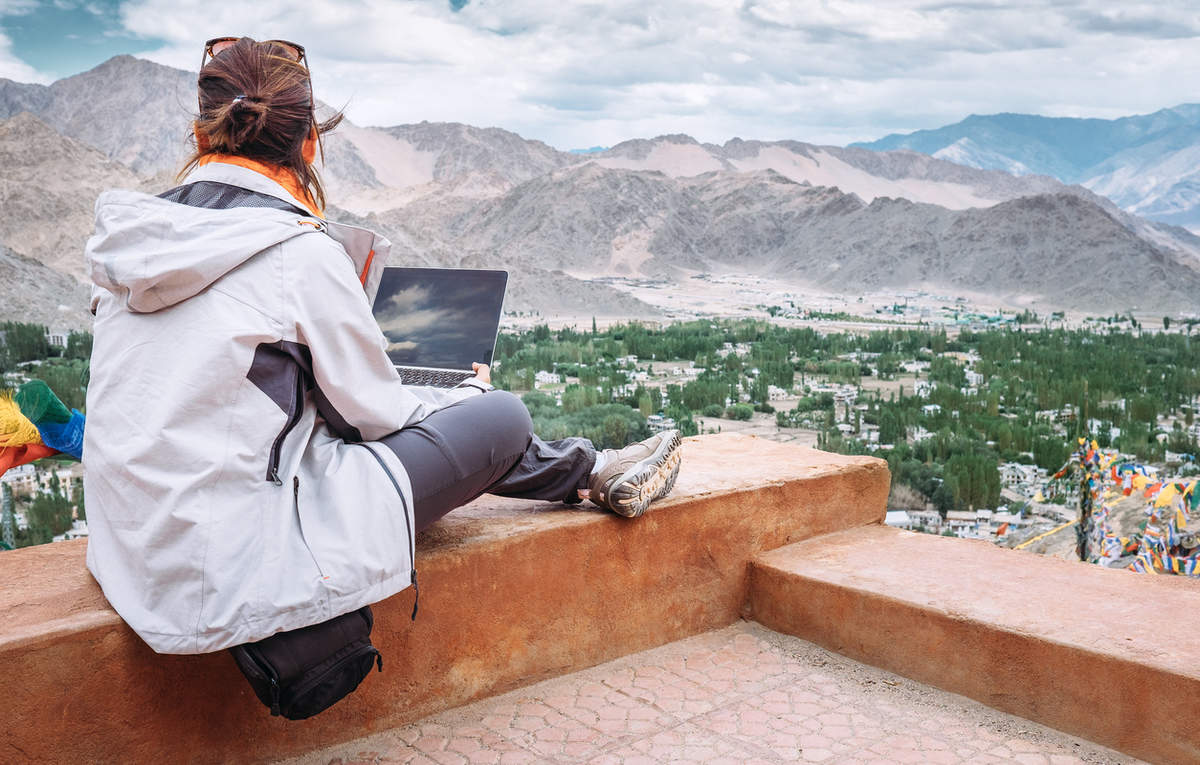How to Travel Light and Smart as a Digital Nomad
The romantic notion of working from tropical beaches while carrying everything you own in a single backpack has captivated millions, yet the reality of nomadic living demands far more strategic thinking than Instagram feeds suggest. The difference between successful long-term nomadism and burnout often lies not in destination choices or income streams, but in the fundamental approach to possessions, systems, and mobility itself.
Modern digital nomadism has evolved beyond the early adopter phase where any laptop and willingness to sleep in hostels sufficed for location independence. Today's successful nomads operate sophisticated systems that blend minimalism with strategic redundancy, mobility with stability, and spontaneity with careful planning. The challenge lies not in owning less, but in owning exactly what serves multiple purposes while maintaining the flexibility to adapt to changing circumstances.
The psychological shift from accumulation to optimization represents perhaps the most significant barrier for aspiring nomads. Traditional lifestyle models reward acquisition and expansion, while nomadic success demands ruthless prioritization and intelligent substitution. This fundamental reorientation affects everything from clothing choices to technology investments, requiring new frameworks for evaluating what truly adds value to an untethered lifestyle.
Understanding that every possession becomes either an asset or liability when mobility defines daily life transforms decision-making processes completely. The question evolves from "Do I want this?" to "Does this serve multiple purposes, justify its weight and space, and enhance rather than complicate my ability to work and move freely?"
Rethinking the Foundation of Mobility
Traditional packing advice focuses on cramming maximum utility into minimum space, but sustainable nomadism requires rethinking the entire relationship with physical possessions. The goal shifts from carrying everything you might need to developing systems that ensure you can acquire what you need anywhere you might go.
The clothing capsule concept becomes revolutionary when applied with nomadic intelligence rather than fashion magazine simplicity. Each garment must serve multiple functions across different climates, social situations, and activity levels while maintaining durability through constant wear and frequent washing in varying conditions. Merino wool emerges as a game-changer not because it's trendy, but because it regulates temperature, resists odors, and maintains appearance through treatment that would destroy cotton alternatives.
Color coordination transcends aesthetics when your entire wardrobe must mix and match seamlessly. A carefully chosen palette ensures that every combination works together, eliminating the mental energy required for outfit planning while maximizing the perceived variety available from limited pieces. The psychological impact of looking and feeling appropriately dressed cannot be understated when your appearance directly affects professional opportunities and social integration in diverse cultural contexts.
Layering systems replace specific-purpose garments, allowing adaptation to microclimates and indoor-outdoor temperature variations without carrying bulky alternatives. A lightweight merino base layer, versatile mid-layer, and weather-resistant outer shell can handle conditions from air-conditioned offices in tropical cities to mountain hiking in temperate zones.
Footwear represents the most critical and challenging category for nomadic minimalists. Shoes cannot be compressed, take significant luggage space, and serve highly specific functions that resist consolidation. The solution involves identifying styles that blur traditional boundaries while maintaining functionality across multiple use cases.
Technology Ecosystem Optimization
Portugal forums and digital nomad communities consistently identify technology optimization as the make-or-break factor for sustained location independence. The temptation to pack multiple devices for redundancy must be balanced against weight penalties and the reality that electronics failure often stems from complexity rather than lack of backup options.
The single-device philosophy works only when that device can handle every aspect of professional requirements without compromise. Modern laptops with sufficient processing power, memory, and connectivity can replace multiple specialized tools through cloud-based software solutions and virtual environments. The key lies in choosing specifications that exceed current requirements while maintaining portability constraints.
Cloud storage strategies become critical infrastructure rather than convenient backup solutions. Local storage failures can devastate nomadic businesses, making distributed cloud redundancy essential rather than optional. Multiple cloud providers ensure access continuity even when regional internet restrictions or service outages affect primary platforms.
Connectivity redundancy demands more sophistication than carrying multiple SIM cards or relying on public WiFi. Mobile hotspot devices with international roaming capabilities provide backup internet access when primary connections fail, while portable power solutions ensure devices remain functional during infrastructure limitations common in emerging nomad destinations.
The digital transformation of traditionally physical items eliminates significant weight and space requirements while improving accessibility. Digital documents, entertainment libraries, reference materials, and even clothing catalogs stored in cloud-accessible formats reduce physical carrying requirements while maintaining full utility.
Cable management and charging solutions require careful optimization to prevent the cable chaos that plagues amateur nomads. Universal charging solutions, multi-port adapters, and standardized cable types eliminate the need for device-specific charging gear while ensuring compatibility across different electrical systems worldwide.

Strategic Location Independence Planning
Successful nomadism extends far beyond arriving at destinations with appropriate gear. The most experienced nomads develop systems that allow seamless transitions between locations while maintaining productivity and minimizing stress associated with constant change.
Accommodation strategies must balance cost, comfort, and functionality while supporting work requirements. The rise of nomad-friendly housing options has created opportunities to secure appropriate living situations without the traditional challenges of international relocation, but success requires understanding how to evaluate and secure these options remotely.
Local integration acceleration becomes crucial when frequent location changes prevent traditional relationship building. Language learning applications, cultural research systems, and community connection platforms help nomads establish meaningful local connections quickly rather than remaining perpetually isolated as tourists.
Banking and financial management complexity multiplies when income sources, expense categories, and currency requirements span multiple countries with different regulatory frameworks. Digital banking solutions designed for international lifestyle provide essential infrastructure, but nomads must understand tax implications and compliance requirements across relevant jurisdictions.
Healthcare access planning cannot be left to chance when traditional insurance models assume stable residence patterns. International health insurance, prescription medication access strategies, and emergency medical evacuation coverage become essential rather than optional considerations for sustainable nomadism.
Legal and administrative considerations compound quickly when residence patterns don't align with traditional assumptions about domicile, tax residency, and civic obligations. Successful nomads develop systems for maintaining compliance with relevant requirements while preserving flexibility to adapt residence patterns based on opportunities and preferences.
Psychological and Social Sustainability
The mental health challenges of constant change and social isolation affect nomads at rates that would surprise casual observers. The Instagram lifestyle marketing rarely addresses the psychological toll of perpetual adaptation, decision fatigue, and relationship maintenance across time zones and cultural barriers.
Routine development becomes paradoxically more important when external structure constantly changes. Successful nomads create portable routines that provide stability and productivity regardless of location, time zone, or local customs. These personal systems serve as anchors during the inevitable challenges of nomadic lifestyle.
Social connection strategies must replace traditional community building with intentional relationship maintenance and new community integration approaches. Long-term nomadism requires deliberate effort to maintain meaningful relationships while building new connections that transcend superficial nomad networking.
The decision-making fatigue associated with constant choices about locations, accommodations, transportation, and daily logistics can overwhelm even experienced travelers. Successful nomads develop decision frameworks and automation systems that reduce daily cognitive load while preserving flexibility for important choices.
Cultural adaptation skills become more critical than language abilities for nomads who change locations frequently. Understanding how to quickly assess and adapt to local customs, business practices, and social expectations prevents misunderstandings that can derail work opportunities or social integration.
Long-term Sustainability and Growth
Nomadic minimalism must evolve as careers develop and life circumstances change. The systems that work for single nomads in their twenties require adaptation for families, health changes, or business growth that demands different resource requirements.
The exit strategy paradox challenges nomads to maintain location independence while building assets and relationships that might eventually anchor them geographically. Successful long-term nomads develop approaches that preserve optionality rather than forcing permanent commitment to untethered living.
Community building within nomadic circles provides support systems and knowledge sharing that accelerate learning curves and provide assistance during challenges. However, these communities can also create echo chambers that reinforce unsustainable practices or unrealistic expectations about nomadic lifestyle realities.
Conclusion
Smart nomadic travel emerges from the intersection of minimalist philosophy, technological optimization, and strategic lifestyle design rather than simply carrying fewer possessions while working remotely. The most successful digital nomads develop sophisticated systems that support sustained mobility while maintaining productivity, relationships, and personal well-being across diverse environments and changing circumstances.
The light and smart approach requires continuous refinement based on actual experience rather than theoretical optimization. What works in Southeast Asian humidity may fail in Northern European winters, just as systems optimized for solo travel require complete reorganization for nomadic families or business partnerships.
Success ultimately depends on honest assessment of personal priorities, professional requirements, and lifestyle preferences rather than attempting to replicate someone else's nomadic approach. The goal isn't to travel with the least possible possessions or visit the most destinations, but to create sustainable systems that support meaningful work and fulfilling experiences regardless of geographic location.
The future of digital nomadism will likely see continued evolution toward more sophisticated support systems, infrastructure development, and community resources that reduce the complexity barrier for nomadic lifestyle adoption. However, the fundamental principles of intentional minimalism, strategic redundancy, and systematic adaptation will remain essential for anyone seeking to master the art of smart nomadic living.
- Art
- Causes
- Crafts
- Dance
- Drinks
- Film
- Fitness
- Food
- Spellen
- Gardening
- Health
- Home
- Literature
- Music
- Networking
- Other
- Party
- Religion
- Shopping
- Sports
- Theater
- Wellness



